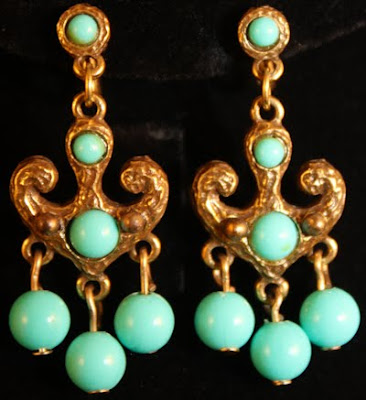- Pearls are ideal for both day and night, and are quintessentially classic.
- Bracelets that don't jangle are both understated and proper.
- Earrings with a matching necklace "speaks of good taste".
- Gold or silver bracelets can be worn in great quantity "if they fit you and the costume".
- Rhinestones may only be worn after noon, if paired with a dressy outfit.
- If purchasing an entire parure of rhinestones, wear only one or two at a time.

And when shopping for earrings, "the woman with a large, round face should wear massive, bulky ear clips for better proportion. Little ones will look lost". For a long, narrow face, choose "ear clips triangular in sharp - with the base at the lowest part of the lobe and the point at the top" to create a "more becoming" oval appearance.

And for prettier hands, choose according to their shape as well:
- Long and slim hands require a flexible mesh bracelet or several slender circlets. Rings should have stones with wide settings, as wide as the finger, and dark fingernail polish.
- Large hands use wide rings best, or rings with high dome-shaped settings. "Wear a massive bracelet with high ornament, pushed up on arm" and dark or medium polish with clear moons & tips.
- The slim little hand needs narrow bracelets and rings with gems set as rosettes.
- And the broader hand can use substantial bracelets pushed up the arm to balance the proportion, with rings in elongated settings and light polish.

Resources:
Author Unknown (1969). State College of Beauty Culture Guide to Beauty - Charm - Poise. New York: Milady Publishing Corp.










